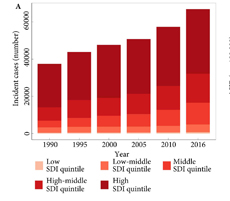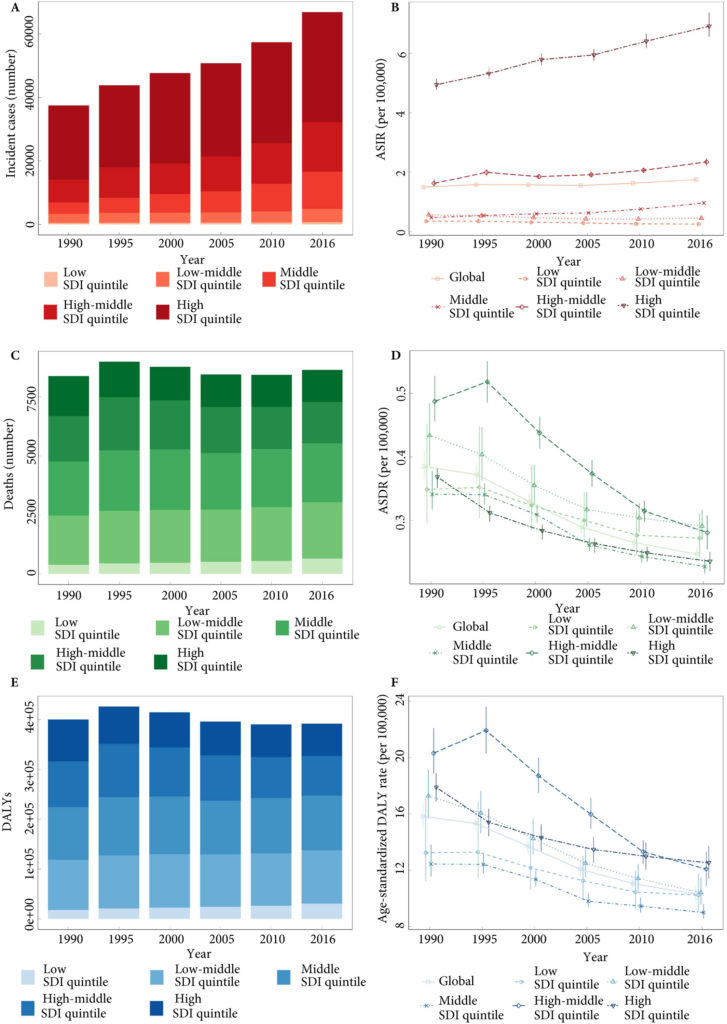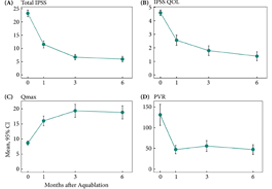Article of the week: A longitudinal analysis of urological chronic pelvic pain syndrome flares in the Multidisciplinary Approach to the Study of Chronic Pelvic Pain (MAPP) Research Network
Every week, the Editor-in-Chief selects an Article of the Week from the current issue of BJUI. The abstract is reproduced below and you can click on the button to read the full article, which is freely available to all readers for at least 30 days from the time of this post.
In addition to the article itself, there is an editorial written by a prominent member of the urological community. These are intended to provoke comment and discussion and we invite you to use the comment tools at the bottom of each post to join the conversation.
If you only have time to read one article this week, it should be this one.
A longitudinal analysis of urological chronic pelvic pain syndrome flares in the Multidisciplinary Approach to the Study of Chronic Pelvic Pain (MAPP) Research Network
Siobhan Sutcliffe*, Robert Gallop†, Hing Hung Henry Lai‡§, Gerald L. Andriole‡, Catherine S. Bradley¶**††, Gisela Chelimsky‡‡, Thomas Chelimsky§§, James Quentin Clemens¶¶, Graham A. Colditz*, Bradley Erickson††, James W. Griffith***, Jayoung Kim†††, John N. Krieger‡‡‡, Jennifer Labus§§§, Bruce D. Naliboff§§§, Larissa V. Rodriguez¶¶¶, Suzette E. Sutherland‡‡‡, Bayley J. Taple*** and John Richard Landis†
*Division of Public Health Sciences, Department of Surgery and the Alvin J. Siteman Cancer Center, Washington University School of Medicine, St. Louis, MO, †Department of Biostatistics and Epidemiology, Perelman School of Medicine, University of Pennsylvania, Philadelphia, PA, ‡Division of Urologic Surgery, Department of Surgery, §Department of Anesthesiology, Washington University School of Medicine, St. Louis, MO, ¶Department of Obstetrics and Gynecology, Carver College of Medicine University of Iowa, **Department of Epidemiology, College of Public Health, ††Department of Urology, Carver College of Medicine, University of Iowa, Iowa City, IA, ‡‡Department of Pediatrics, Division of Pediatric Gastroenterology, §§Department of Neurology, Medical College of Wisconsin, Milwaukee, WI, ¶¶Division of Neurourology and Pelvic Reconstructive Surgery, Department of Urology, University of Michigan, Ann Arbor, MI, ***Department of Medical Social Sciences, Northwestern University Feinberg School of Medicine, Chicago, IL, †††Departments of Surgery and Biomedical Sciences, Cedars-Sinai Medical Center, Los Angeles, CA, ‡‡‡Department of Urology, University of Washington, Seattle, WA, §§§Oppenheimer Center for Neurobiology of Stress and Resilience and Division of Digestive Diseases, Department of Medicine, David Geffen School of Medicine, University of California Los Angeles, Los Angeles, and ¶¶¶Institute of Urology, University of Southern California, Beverly Hills, CA, USA
Abstract
Objective
To describe the frequency, intensity and duration of urological chronic pelvic pain syndrome symptom exacerbations (‘flares’), as well as risk factors for these features, in the Multidisciplinary Approach to the Study of Chronic Pelvic Pain Epidemiology and Phenotyping longitudinal study.
Participants and Methods
Current flare status (‘urological or pelvic pain symptoms that are much worse than usual’) was ascertained at each bi‐weekly assessment. Flare characteristics, including start date, and current intensity of pelvic pain, urgency and frequency (scales of 0–10), were assessed for participants’ first three flares and at three randomly selected times when they did not report a flare. Generalized linear and mixed effects models were used to investigate flare risk factors.
Results
Of the 385 eligible participants, 24.2% reported no flares, 22.9% reported one flare, 28.3% reported 2–3 flares, and 24.6% reported ≥4 flares, up to a maximum of 18 during the 11‐month follow‐up (median incidence rate = 0.13/bi‐weekly assessment, range = 0.00–1.00). Pelvic pain (mean = 2.63‐point increase) and urological symptoms (mean = 1.72) were both significantly worse during most flares (60.6%), with considerable within‐participant variability (26.2–37.8%). Flare duration varied from 1 to 150 days (94.3% within‐participant variability). In adjusted analyses, flares were more common, symptomatic, and/or longer‐lasting in women and in those with worse non‐flare symptoms, bladder hypersensitivity, and chronic overlapping pain conditions.
Conclusion
In this foundational flare study, we found that pelvic pain and urological symptom flares were common, but variable in frequency and manifestation. We also identified subgroups of participants with more frequent, symptomatic, and/or longer‐lasting flares for targeted flare management/prevention and further study.











